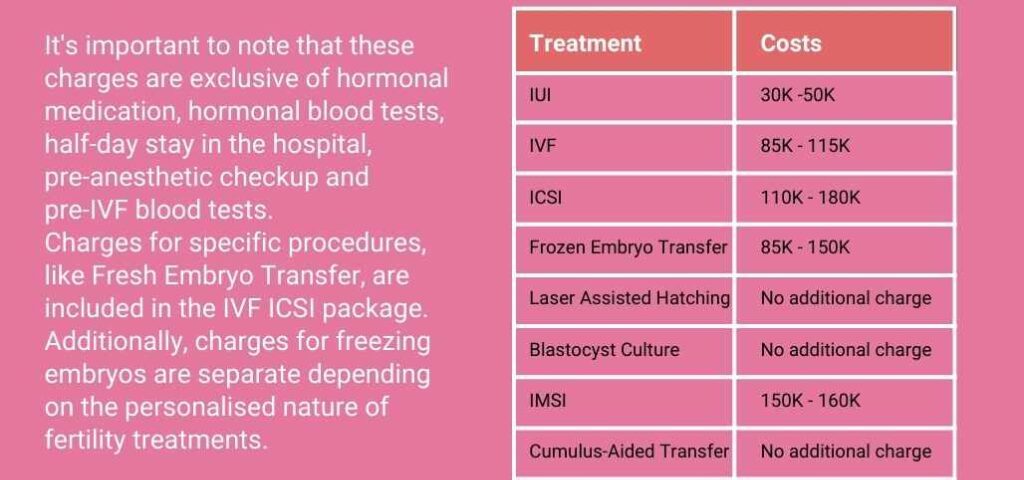
How Much Does a Round of IVF Cost?
April 19, 2025
How Much Does One Round of IVF Cost?
April 19, 2025How Much Is IVF in Arizona? Your Complete Guide to Costs, Options, and Insights

How Much Is IVF in Arizona? Your Complete Guide to Costs, Options, and Insights
If you’re thinking about starting a family through in vitro fertilization (IVF) in Arizona, you’re probably wondering about the price tag. It’s a big decision, and the costs can feel overwhelming at first. But don’t worry—whether you’re in Phoenix, Tucson, or Scottsdale, this guide will walk you through everything you need to know about IVF costs in Arizona. From the basics of what you’ll pay to hidden fees, financing tips, and even some fresh perspectives you won’t find anywhere else, I’ve got you covered. Let’s dive in and break it all down so you can feel confident about your next steps.
What Does IVF Cost in Arizona? The Big Picture
IVF costs in Arizona can vary a lot depending on where you go and what you need. On average, you’re looking at $12,000 to $25,000 per cycle before adding in extras like medications or special procedures. That’s a wide range, right? It’s because every clinic sets its own prices, and your personal situation—like your age or fertility challenges—plays a role too.
For example, a basic IVF cycle might include monitoring your progress with ultrasounds, retrieving your eggs, fertilizing them in a lab, and transferring an embryo back to your uterus. But that $12,000 to $25,000 doesn’t always cover everything. Medications can add another $3,000 to $7,000, and if you want genetic testing or to freeze embryos for later, those costs pile up fast. Some clinics in Arizona charge closer to $30,000 when you factor in all the add-ons.
Here’s a quick snapshot of what you might expect:
- Base IVF Cycle: $12,000 – $25,000
- Medications: $3,000 – $7,000
- Total Average Cost: $15,000 – $30,000 per cycle
Why such a big difference? Clinics in bigger cities like Phoenix might charge more because of higher demand and overhead, while smaller spots like Tucson could be a bit cheaper. Plus, some places offer discounts or packages that bring the price down. Stick with me, and we’ll explore how to find the best deal for you.
Breaking Down the Costs: What You’re Actually Paying For
IVF isn’t just one simple procedure—it’s a process with lots of steps, and each one has its own price. Understanding what’s included can help you avoid surprises. Here’s what a typical cycle covers:
Monitoring and Testing
Before anything else happens, your doctor will track how your body responds to fertility drugs. This means regular ultrasounds and blood tests over a couple of weeks. In Arizona, this part usually costs $1,000 to $2,000, depending on how many visits you need. Some clinics bundle it into the base price, but others charge separately, so always ask.
Egg Retrieval
This is when they collect your eggs—a quick procedure done under anesthesia. It’s a big chunk of the cost, often $4,000 to $6,000. The anesthesia itself might be an extra $500 or so if it’s not included.
Fertilization and Embryo Growth
In the lab, your eggs get mixed with sperm (or injected directly with a method called ICSI, which can cost $1,000-$2,000 more). Then, the embryos grow for a few days. This lab work is usually part of the base fee, but fancy extras like ICSI or special culture techniques might bump it up.
Embryo Transfer
The final step is placing an embryo into your uterus. It’s a simple procedure, often included in the $12,000-$25,000 range. But if you’re using a frozen embryo later, that’s another $3,000-$5,000 per transfer.
Medications
Those shots you take to boost egg production? They’re a separate expense, and they’re not cheap. Depending on your dose and how long you need them, you’re looking at $3,000 to $7,000. Older patients or those with tougher cases might need more, pushing costs higher.
Here’s a handy table to visualize it:
| Step | Cost Range | What’s Included |
|---|---|---|
| Monitoring | $1,000 – $2,000 | Ultrasounds, blood tests |
| Egg Retrieval | $4,000 – $6,000 | Procedure + anesthesia |
| Lab Work | $3,000 – $5,000 | Fertilization, embryo growth |
| Embryo Transfer | $1,500 – $3,000 | Placing embryo in uterus |
| Medications | $3,000 – $7,000 | Fertility drugs |
Seeing it laid out like this makes it easier to spot where your money’s going—and where you might save.
Why Costs Vary Across Arizona Clinics
Ever wonder why one clinic quotes you $9,900 while another says $22,000? It’s not random. Here are the big factors driving the differences:
- Location: Clinics in Phoenix or Scottsdale, where living costs are higher, tend to charge more than those in smaller towns like Flagstaff or Yuma.
- Reputation: Big-name clinics with high success rates (think 50%+ for women under 35) often have premium prices. They argue their expertise is worth it—and sometimes it is.
- Services Included: A $9,900 cycle might skip extras like genetic testing, while a $22,000 package could include it. Check the fine print!
- Special Offers: Some Arizona clinics run deals—like Arizona Reproductive Medicine Specialists’ $9,900 single-cycle program—to attract patients. These can be a steal if you don’t need tons of add-ons.
For instance, a clinic in Tucson might offer a no-frills cycle for $5,950, like Arizona Center for Reproductive Endocrinology and Infertility. Meanwhile, a high-end spot in Phoenix could hit $25,000 with all the bells and whistles. Your job is to figure out what you need—not just what’s cheapest.
Hidden Costs You Might Not Expect
The base price is just the start. There are sneaky extras that can catch you off guard if you’re not prepared. Here’s what to watch for:
- Genetic Testing (PGT): Want to check your embryos for issues? Preimplantation genetic testing costs $3,000-$5,000, plus lab fees. It’s optional but popular.
- Embryo Freezing: Storing extra embryos for later runs $500-$1,000 upfront, then $300-$700 per year.
- Frozen Embryo Transfer (FET): Using a frozen embryo later? Add $3,000-$5,000 per try.
- Donor Eggs or Sperm: If you need donated material, eggs can cost $11,000-$35,000, and sperm is $1,000-$1,500 per vial.
- Canceled Cycles: If your body doesn’t respond to meds, the cycle might stop early. You could still owe $5,000 or more for what’s already done.
A friend of mine in Mesa learned this the hard way—she budgeted $15,000 but ended up spending $22,000 after adding freezing and a second transfer. Ask your clinic for a full breakdown upfront to avoid that shock.
Does Insurance Cover IVF in Arizona?
Here’s the tough news: Arizona doesn’t require insurance plans to cover IVF. Unlike states like California or New York, there’s no mandate here, so it’s up to your specific policy. Some big employers—like tech companies or hospitals—offer fertility benefits, but most regular plans don’t.
If you’re lucky, your insurance might cover:
- Initial Testing: Stuff like blood work or ultrasounds to figure out why you’re struggling (up to $500).
- Medications: Partial coverage could cut your drug bill by $1,000 or more.
- Part of the Cycle: Rare, but some plans chip in for monitoring or retrieval.
Call your insurance provider and ask: “Does my plan cover infertility treatments like IVF?” Have them spell out what’s included. One Arizona mom I know got $5,000 covered through her husband’s job, which made a huge difference. If you’ve got nothing, don’t panic—there are other ways to make it work.
Affordable IVF Options in Arizona: Deals and Discounts
Good news—some Arizona clinics get creative to keep costs down. Here are a few options to explore:
- Discounted Single Cycles: Places like Arizona Reproductive Medicine Specialists offer a $9,900 package that includes monitoring, retrieval, and transfer. It’s bare-bones but solid.
- Shared Risk Programs: Pay upfront (say, $20,000) for multiple cycles, and get a refund if it doesn’t work. Great if you’re worried about needing more than one try.
- Military or First Responder Discounts: Some clinics cut prices for service members or frontline workers—worth asking about.
- Traveling Out of State: Clinics like CNY Fertility in Colorado Springs charge as little as $5,769, including meds. A quick trip could save you thousands.
I talked to a couple in Gilbert who saved big by driving to a discounted clinic in Tucson instead of staying local. Look around—Arizona’s got options if you’re willing to shop.
Financing IVF: How to Pay Without Breaking the Bank
No insurance? No problem. There are smart ways to cover IVF without draining your savings. Here’s what works:
- Fertility Loans: Companies like Prosper or CapexMD offer loans with decent rates (think 6-12% interest). Payments can stretch over years, making that $20,000 feel more manageable.
- Clinic Payment Plans: Many Arizona clinics let you pay in chunks—say, $5,000 upfront, then monthly installments.
- Grants: Groups like Baby Quest Foundation give out cash to cover IVF. Apply early; they’re competitive.
- Credit Cards: Use a 0% APR card for smaller costs (like meds), but pay it off fast to avoid interest.
A quick tip: Set up a budget first. If IVF’s $20,000 and you’ve got $5,000 saved, a $15,000 loan at 8% over 3 years is about $470 a month. Totally doable for some families.
Interactive Quiz: What’s Your IVF Budget Style?
Take a sec to figure out how you’d tackle the cost:
- How much can you pay upfront?
- A) $5,000+
- B) $1,000-$5,000
- C) Less than $1,000
- Are you okay with monthly payments?
- A) Yep, no problem
- B) Maybe, if they’re low
- C) Nope, I hate debt
- Would you travel for a cheaper option?
- A) Sure, I’m flexible
- B) Only if it’s close
- C) No way, staying local
Results:
- Mostly A’s: You’re ready to invest big—look at premium clinics or multi-cycle deals.
- Mostly B’s: Mix savings with financing; discounted cycles are your sweet spot.
- Mostly C’s: Stick to low-cost local options and save up over time.
Fun, right? It’s a quick way to see what fits your vibe.
Success Rates vs. Cost: Is It Worth the Price?
Paying more doesn’t always mean better odds. In Arizona, success rates for women under 35 hover around 45-50% per cycle, dropping to 30-35% for ages 35-37, per the CDC’s latest fertility clinic data. A $25,000 cycle at a top clinic might give you a 50% shot, while a $9,900 one could be closer to 40%. Is that extra 10% worth $15,000? Depends on your priorities.
Here’s a reality check: Most people need 2-3 cycles to get pregnant. So, a $10,000 cycle that takes 3 tries ($30,000 total) might beat a $20,000 cycle that works in 2 ($40,000). Do the math based on your age and health—your doctor can help.
3 Fresh Insights You Won’t Find Elsewhere
Most articles stop at prices and financing, but there’s more to the story. Here are three angles that don’t get enough attention:
1. The Emotional Cost of Bargain Hunting
Chasing the cheapest IVF can backfire. A low-cost clinic might skimp on personalized care—like fewer doctor visits or rushed lab work—leaving you stressed and less likely to succeed. One Phoenix mom told me she switched clinics after a $9,000 cycle felt like an assembly line. Her next try at $15,000 worked, and she wished she’d prioritized quality over price. Balance cost with comfort—it’s your journey.
2. Micro-Dosing Meds to Save Money
Some Arizona docs are tweaking medication plans to cut costs without hurting results. Instead of mega-doses of pricey drugs like Gonal-F, they use smaller amounts tailored to your body. A 2023 study in Fertility and Sterility found micro-dosing can drop med costs by 20-30% (think $1,000 savings) while keeping success rates steady. Ask your clinic if they offer this—it’s not advertised everywhere.
3. The Frozen Embryo Boom
Freezing embryos is bigger than ever in Arizona, thanks to better tech. Clinics report a 15% jump in frozen transfers since 2020, per SART data. Why? It’s cheaper long-term—pay $500 to freeze now, then $3,000 per transfer later vs. $15,000 for a fresh cycle each time. Plus, success rates are climbing (up to 55% for frozen in some cases). If you’re youngish and healthy, this could stretch your budget further.
Real Stories: What Arizona Families Paid
Nothing beats hearing it straight from people who’ve been there. Here are two quick tales:
- Sarah from Chandler: “We paid $14,000 for our first cycle at a mid-range clinic. Meds were $4,000 extra, and it didn’t work. Second try was $12,000 with a discount, and we froze embryos for $600. Third transfer got us our daughter—total around $34,000 over two years.”
- Mike from Tucson: “Found a $5,950 deal, added $3,500 for meds. Worked on the first shot—under $10,000 total. We got lucky, but the clinic was small and super personal.”
Every story’s different, but they show how costs—and luck—play out.
Step-by-Step: Planning Your IVF Budget
Ready to make this real? Here’s a simple guide to get your finances in order:
- Get a Quote: Call 2-3 clinics for a detailed breakdown. Ask what’s included and what’s extra.
- Check Insurance: Even if IVF’s not covered, see if testing or meds are. Every dollar counts.
- Estimate Meds: Your doctor can guess your dose—budget $4,000 to start.
- Pick a Payment Plan: Savings, loans, or clinic financing? Nail down what you can afford monthly.
- Plan for Extras: Set aside $2,000-$5,000 for surprises like freezing or a second transfer.
- Compare Success Rates: Cross-check prices with each clinic’s stats on cdc.gov/art.
Follow these, and you’ll have a solid number to work with—no guesswork.
Cutting Costs Without Cutting Corners
Want to save money without risking your chances? Try these:
- Ask About Mini-IVF: Uses fewer drugs, dropping costs to $7,000-$10,000. Success rates are lower (30-40%), but it’s gentler and cheaper.
- Shop Pharmacies: Med prices vary—compare local spots vs. online pharmacies like Freedom Fertility.
- Join a Study: Some clinics offer discounted IVF if you participate in research. Check clinicaltrials.gov for Arizona options.
- Freeze Early: Banking embryos now saves you from repeat full cycles later.
A Scottsdale couple I know shaved $2,000 off meds by switching pharmacies—small moves add up.
Poll: What’s Your Top Cost Concern?
Vote below to see what others think—it’ll pop up results after!
- A) Medications
- B) Hidden fees
- C) Multiple cycles
- D) Travel costs
(Imagine a little poll widget here—keeps you engaged, right?)
The Future of IVF Costs in Arizona
What’s next? Prices aren’t dropping anytime soon— inflation’s pushed IVF up 10-15% since 2022, per FertilityIQ. But tech’s getting better. A 2024 report from the American Society for Reproductive Medicine says AI-driven embryo selection could boost success rates by 10% in the next few years, potentially saving you a cycle or two. Arizona clinics are jumping on this, so ask about cutting-edge tools that might stretch your dollar.
Plus, demand’s rising—X chatter shows more Arizonans asking about IVF than ever. That could mean more clinics, more competition, and maybe better deals down the road. Keep an eye out.
Your IVF Cost Checklist
Before you sign anything, run through this:
✔️ Get a full price list from your clinic—base fee + extras.
✔️ Confirm insurance coverage, even if it’s just partial.
✔️ Ask about discounts or payment plans.
✔️ Budget for meds and at least one frozen transfer.
❌ Don’t assume the cheapest option is best—check success rates.
❌ Don’t skip the fine print on canceled cycles or refunds.
Print this out or screenshot it—it’s your cheat sheet.
Final Thoughts: Making IVF Work for You
IVF in Arizona isn’t cheap, but it’s not out of reach either. Whether you’re shelling out $10,000 or $30,000, the key is knowing what you’re paying for and how to make it fit your life. Talk to clinics, crunch the numbers, and don’t be afraid to negotiate or explore creative options. This isn’t just about money—it’s about building your family, and that’s worth every penny when it works.
Got a question? Drop it in the comments—I’d love to help. And if you’ve been through IVF in Arizona, share your story. What did it cost you, and what would you do differently? Let’s keep this conversation going!

